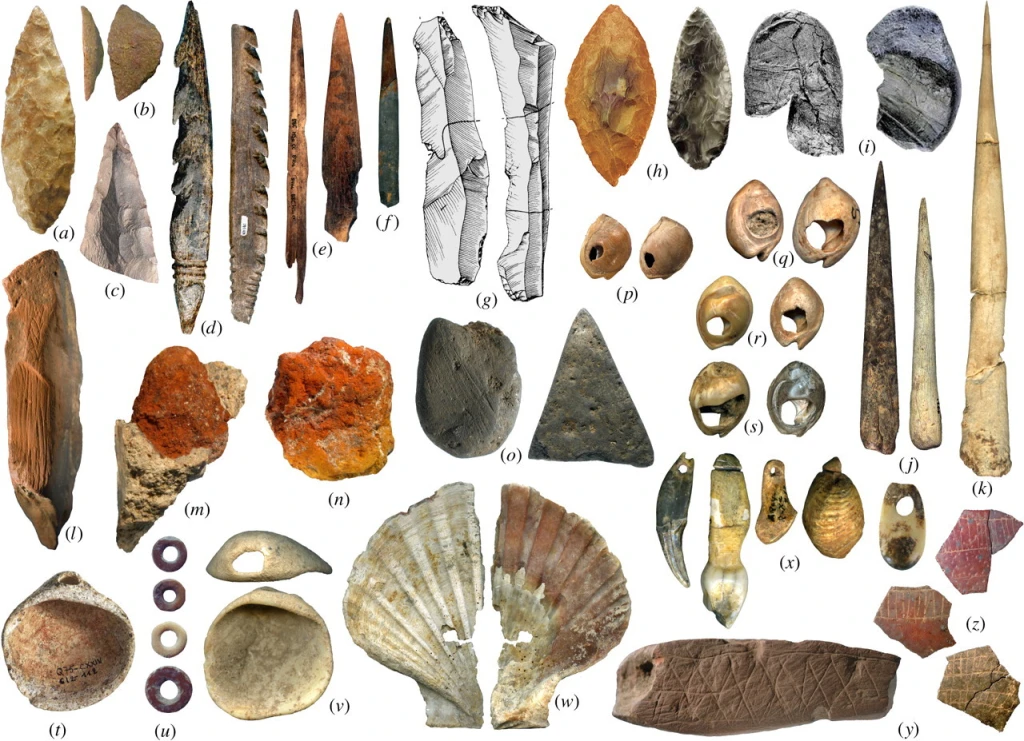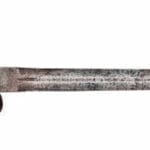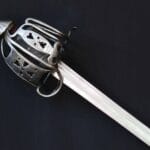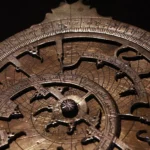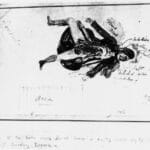Step back in time and imagine a world where tools were the key to survival and success. Whether it was the farmer’s sickle that fed the people or the knight’s sword that protected the realm, the tools of the Middle Ages played a vital role in shaping daily life and warfare. From humble beginnings to the forging of sophisticated weapons, this article will take you on a fascinating journey through the evolution and significance of these essential instruments. Join us as we explore the craftsmanship, the sweat, and the stories behind the tools that shaped a pivotal era in human history.
Tools of the Middle Ages
The Middle Ages—a time often romanticized for its knights in shining armor and castles perched precariously on cliffs. Yet, beneath the veneer of chivalry and courtly love lies a world driven by the ingenuity and craftsmanship of its tools. These implements, often overlooked, were the backbone of medieval society, shaping everything from agriculture and warfare to the very fabric of daily life.
Consider the humble farmer, who, without the luxury of modern machinery, relied on hand-crafted tools like sturdy axes to clear the land and ingeniously designed plows to work the soil. These weren’t mere implements; they were lifelines, ensuring survival in an era when sustenance was directly tied to the earth.
Then there’s the iconic knight, clad in chainmail—thousands of tiny metal rings, each meticulously linked by hand to create a surprisingly flexible and life-saving armor. And let’s not forget the imposing plate armor, essentially a full-body suit of metal that must have made the wearer feel invincible. These weren’t just slapped together; they were the result of generations of honed metalworking skills, a testament to the dedication and artistry of medieval craftsmen.
But the Middle Ages wasn’t just about brute force. The era witnessed remarkable innovations, like the longbow—a weapon that transformed warfare. Capable of launching arrows with incredible power and accuracy, the longbow underscored the importance of strategy and skill on the battlefield.
Off the battlefield, innovation continued to flourish. Towering windmills harnessed the power of nature, grinding grain and freeing up human labor. Eyeglasses, a seemingly commonplace invention today, revolutionized the Middle Ages, enabling more people to access the world of reading and learning. Even the way people told time was changing, with the advent of intricate mechanical clocks, forever altering the pace of life.
What’s truly remarkable is the durability and quality of medieval tools. Built to last, these tools were designed to withstand the harsh realities of life back then. Their versatility was another defining feature; often adaptable for multiple purposes, these implements reflected the ingenuity and resourcefulness of the people who made and used them.
So, the next time you encounter the world of the Middle Ages, take a moment to appreciate the tools. They might not be as glamorous as knights and castles, but they hold the key to understanding the true spirit of this fascinating period in history.
The Agricultural Revolution – How Did Medieval Tools Transform Farming?
Imagine Europe in the throes of the Middle Ages. Life was arduous, and farming was the lifeblood of society. Then, a revolution unfolded, not with clamor and upheaval, but with the quiet clinking of tools and the whispering of new farming techniques. This was the agricultural revolution, a period of unprecedented innovation that irrevocably transformed the way people grew food and, in turn, reshaped European society.
At the heart of this transformation was the moldboard plow. Unlike its predecessors, which merely scratched the surface, the moldboard plow boasted a curved blade that dug deep, turning over the soil and creating neat furrows. This innovation brought about better drainage, leading to healthier crops and increased food production.
But the agricultural revolution wasn’t a one-hit wonder. Farmers adopted crop rotation, understanding that planting different crops in a cycle kept the soil fertile and prevented depletion. This savvy technique further boosted agricultural yields, ensuring a more sustainable food supply.
Open-field farming also emerged as a defining feature of this era. Gone were the days of small, enclosed fields. Open-field farming encouraged the consolidation of land, making it possible to use plows pulled by oxen or horses, a testament to the growing efficiency of medieval farming practices.
This surge in food production had a ripple effect on medieval society. A well-fed population meant population growth. Towns and cities, once modest settlements, began to expand, buzzing with the clamor of markets and trade. As farming became the backbone of the economy, a new social order emerged—feudalism. Under this system, lords owned the land, and peasants worked it in exchange for protection and a share of the harvest.
The medieval agricultural revolution was a pivotal turning point in history. New tools and techniques led to a surplus of food, which, in turn, spurred population growth, fueled the rise of towns and markets, and laid the foundation for a new social order. This period of innovation left an indelible mark on the world, shaping the agricultural practices and societal structures we see today.
Medieval Warfare – What Weapons Dominated the Battlefield?
Medieval weaponry, far from being mere instruments of brute force, were intricately intertwined with notions of power, prestige, and even artistry. These weapons, forged with skill and precision, were extensions of the warrior, reflecting the technological advancements and strategic thinking of the time.
Long and Deadly: The Reign of Polearms
On the medieval battlefield, polearms reigned supreme. These long, formidable weapons, tipped with points, blades, or blunt striking surfaces, offered an undeniable advantage in close combat. Soldiers armed with glaives and halberds could strike from a safe distance, keeping sword-wielding opponents at bay. The versatility of polearms was another asset. Whether it was bringing down a mounted knight or clearing a path through enemy lines, these weapons were truly the multi-tools of medieval warfare.
A Storm of Arrows: Ranged Warfare Changes the Game
Before the thunderous roar of cannons, the longbow and crossbow dominated ranged warfare. These innovative weapons revolutionized battlefield tactics. Archers, positioned strategically, could unleash volleys of arrows, decimating enemy ranks before they even engaged in hand-to-hand combat. The longbow, favored by the English, was prized for its speed and rapid-fire capabilities. Meanwhile, the crossbow, more common in mainland Europe, sacrificed speed for sheer power, delivering devastating blows with each shot. The introduction of these ranged weapons marked a turning point in medieval warfare, shifting the emphasis from brute strength to strategy and cunning.
More Than Just Tools: The Enduring Impact of Medieval Weapons
Medieval weapons transcended their utilitarian purpose. They were symbols of status, power, and artistry. Skilled craftsmen often adorned these weapons with intricate designs and markings, transforming them into objects of beauty and pride. Owning a finely crafted sword or axe was a mark of distinction, a testament to one’s wealth and standing.
The legacy of medieval weapons extends far beyond the battlefields of the past. The designs and principles behind these weapons heavily influenced the development of modern weaponry. So, the next time you see a soldier on a battlefield, remember the innovative, often brutal tools of the medieval world that paved the way for modern military technology.
Beyond the Battlefield – Everyday Tools in Medieval Life
While the tools of war often dominate our image of the Middle Ages, the tools of everyday life were equally crucial, shaping the rhythms and routines of medieval society. These implements, crafted with skill and care, were the unsung heroes of the era, enabling people to build, create, and thrive.
Imagine a medieval craftsman—a blacksmith, a woodworker, a stonemason. These artisans, using the strength of their hands and the precision of their tools, were the architects of their world. Anvils rang with the rhythmic pounding of hammers, wood yielded to sharp chisels, and stone was meticulously shaped into intricate designs. Every tool had its purpose, every strike was measured, for these were not just objects, but extensions of the craftsman’s skill, transforming raw materials into the essentials of medieval life.
Inside the Medieval Home
Step inside a medieval home, and you’ll find a world devoid of modern conveniences yet brimming with ingenuity. Cooking, a daily ritual, revolved around cauldrons simmering over open fires, sturdy pots and pans crafted from iron or copper, and the ever-present wooden spoon. Meals were served on simple bowls and trenchers, shared amongst family and friends. When it came to recording recipes, chronicling events, or sending messages, parchment and quills were the tools of choice.
Fields of Grain: The Backbone of the Medieval World
Farming, the lifeblood of medieval society, depended on a suite of essential tools. Picture vast fields where farmers toiled, using plows to till the soil, scythes to harvest the grain, and sickles to gather the bounty. Once harvested, the grain was threshed using flails to separate the grain from the chaff, and winnowing baskets used the wind to remove impurities. These simple yet effective tools were the backbone of the medieval agricultural system, ensuring a steady food supply.
Building Up to the Heavens
The impressive architecture of the Middle Ages—the castles, cathedrals, and even humble dwellings—were all made possible by the skillful use of tools. Medieval builders, using basic yet effective implements, were able to construct magnificent structures that continue to inspire awe today. Hammers and chisels were used to shape stone, saws and axes felled trees, and adzes smoothed and shaped the wood. The ability to create such grandeur with limited tools speaks volumes about the ingenuity and craftsmanship of medieval builders.
More Than Just Objects
Medieval tools, from the humblest spoon to the sturdiest plow, were more than just objects. They were the building blocks of daily life, the unsung heroes behind every meal, every structure, and every aspect of medieval society. These tools, imbued with the sweat and skill of the people who made and used them, offer a tangible connection to a bygone era, reminding us that even in a time vastly different from our own, the basic necessities of life, and the tools we use to achieve them, connect us all.
Did you know that barbers during the medieval era played a significant role in surgical procedures? Read more about the extensive medical knowledge of medieval barbers in this article. If you’re intrigued by medieval medical practices, don’t miss out on this in-depth exploration of surgery in medieval times, a fascinating look into the history of medical advancements. One notable figure in medieval medicine, Theodoric of York, distinguished himself as a skilled barber-surgeon. Discover his remarkable contributions to medieval healthcare in this engaging biography.
- Jehovah’s Witnesses and Mormons: A Comparative Look at Beliefs and Practices - November 24, 2024
- Discover Jasonville, Indiana: Small-Town Charm and Shakamak State Park Adventures - November 24, 2024
- iVoterGuide 2024: Your Guide to Christian Values-Based Voting - November 24, 2024
